Early Childhood Education – ECII 5 year olds
This year, I have had the opportunity to observe and participate in research on the importance of storytelling through play and wordless picture books with Dr. Christine Lee at CONNECT Research and EC2 Demonstration Teachers Kelly Peters, Eric Varela, and Arlen Nava. In the spring quarter, we created imaginary creatures in Rooms 14 and 15. With rolled papers, pom-pom balls, pipe cleaners, beads, and macaroni, the students of Rooms 14 and 15 sparked their creativity to make imaginary creatures.
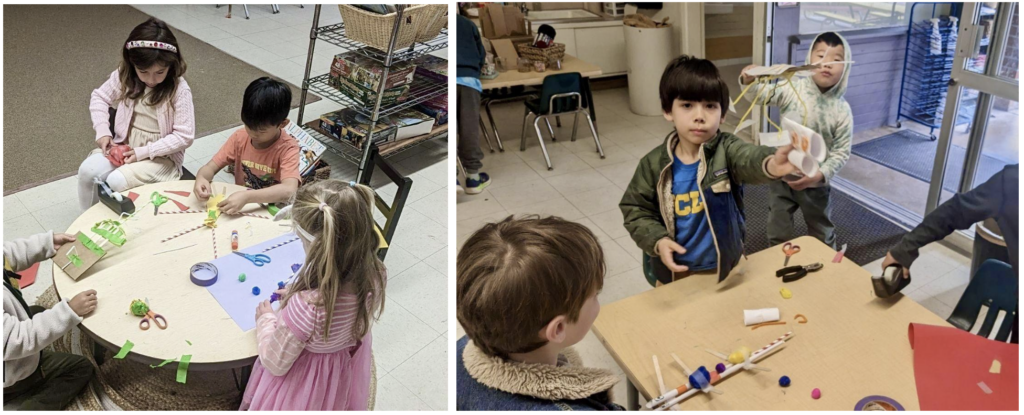
Images 1 & 2. Students use materials to create their imaginary creatures
I was thrilled to see how excited the kids were to personify their creatures based on their own favorite things. By crafting their creatures from various materials, students tapped into their creative potential, envisioning unique characters and characteristics. For example, a student’s creature was named “Spingebob”, which was named after his favorite animated character SpongeBob. Another student who loved unicorns and kittens named her creature “Kittycorn”. It was wonderful to witness their creativity and personal interests come to life through their creatures. I also had a chance to create my very own creature. Twisting pipe cleaners, I made a spider-shaped avatar. When the students asked what the name of my creature was, I told them it was “Trampoline Spider” because its legs bounced off the ground.
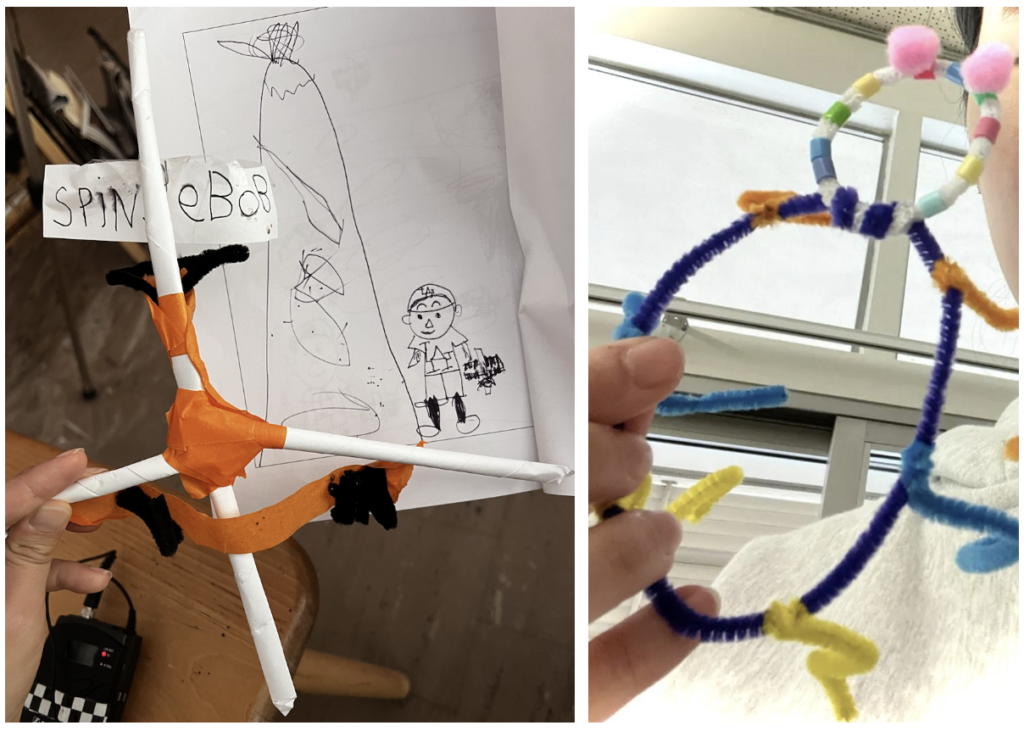
Image 3. Spingebob (left) and Image 4. Trampoline Spider (right)
After creating our creatures, Demonstration Teacher Kelly Peters went outside to play, allowing the students to go on adventures with their creatures.
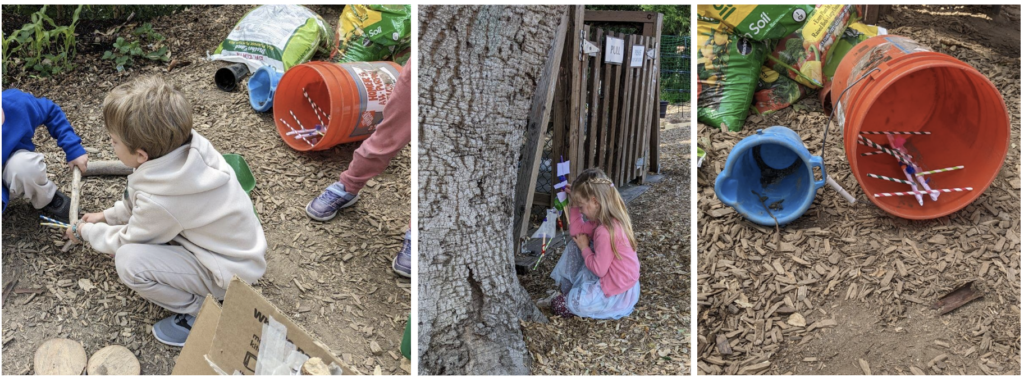
Images 5, 6, & 7. Playing with our creatures
One day while playing with our creatures, a student and his creature attacked and arrested my Trampoline Spider, declaring it had been sentenced to jail for a year. Another student, who overheard what had happened to Trampoline Spider, promised that he and his creature would rescue my Trampoline Spider from jail. Playing with the creatures was inspiring, and I could see imaginations coming to life through their adventurous storylines. During play, I overheard students sharing the unique features, superpowers, and personalities that their creatures had, which ultimately led them to collaboratively build narratives and stories together.
The adventures that students shared with one another and their creatures inspired them to write wordless books that documented their play. They brainstormed and organized their own wordless books, thinking about the kinds of images they would need to draw to illustrate their adventures.
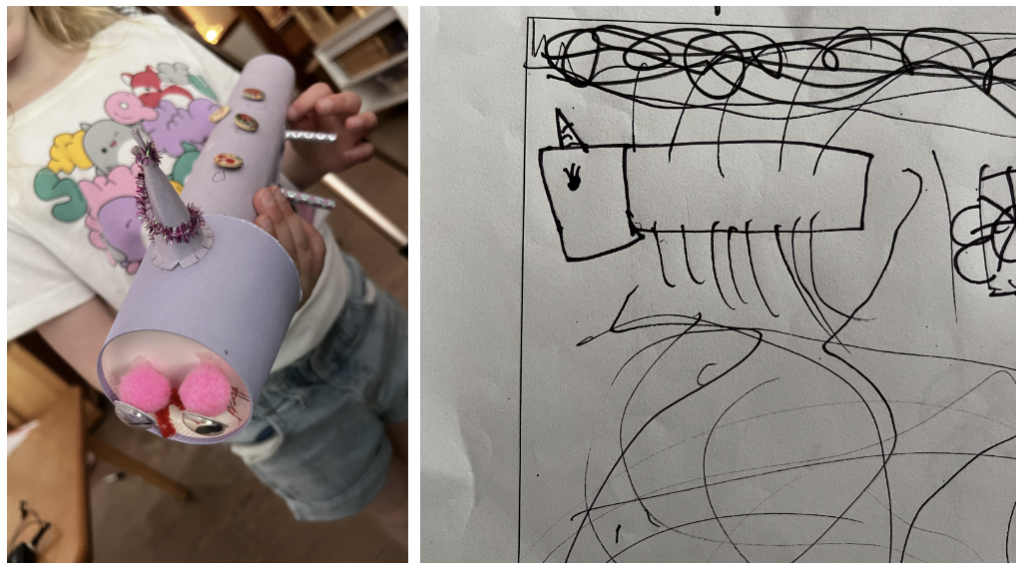
Image 8. Kittycorn (left) and Image 9. Kittycorn in a student’s wordless book (right)
Image 10. Transcription of the wordless book on Kittycorn’s adventure
Reading a wordless book requires imagination and open interpretation; constructing a story without words further demands a clear sense of sequence and plot without relying on words. In creating their wordless books, students were able to use more language creatively and expressively through their drawings. This form of storytelling also encouraged them to focus on details, such as showing movement or illustrating problems their characters encountered.
For instance, a student from Room 14 illustrated Kittycorn crashing into a tree and breaking her wing, vividly conveying the challenges and emotions involved by drawing tears on her character without using any text. Another student depicted her avatar “Magicky” jumping by drawing a coil spring on his feet (see Images 11 & 12). She also drew various facial expressions for her creature, her carrots, and even the sun to add details to the dynamic of the storyline.
Image 11. A student’s creature named Magicky, also featured in her wordless book.
Image 12. Transcription of the wordless book on Magicky’s adventure.
More than half of the students closely observed their friends’ creatures and amplified their stories by incorporating these creatures as sub-characters. By playing with, observing, and incorporating their friends’ creatures into their own stories, they learned to appreciate and build upon each other’s ideas, creating a rich tapestry of interconnected narratives. This whole process allowed students to practice organizing their thoughts and imaginations and constructing coherent storylines, which are crucial skills for their overall literacy development.
I found great joy in witnessing the students’ excitement and creativity, as it was inspiring to see their imaginations come to life through their avatars and stories. The process of creating and sharing these wordless books provided a unique opportunity for students to explore the fundamental means of communication, allowing them to share their experiences and convey emotions to their peers.
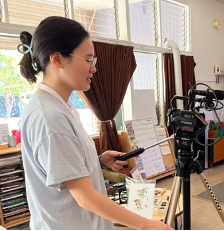
Gayeon Koh is a sophomore at UCLA majoring in Education & Social Transformation and minoring in Data Science Engineering. She is an aspiring educator with a strong passion for AI curriculum development and the teaching profession, particularly for youth. She joined as a CONNECT Research Intern under Dr. Christine Lee’s supervision in 2024.
This blog post comes from a CONNECT Research study, Storytelling and Writing in Kindergarten STEAM Curriculum. Questions about this study can be directed to Dr. Christine Lee (clee@labschool.ucla.edu)